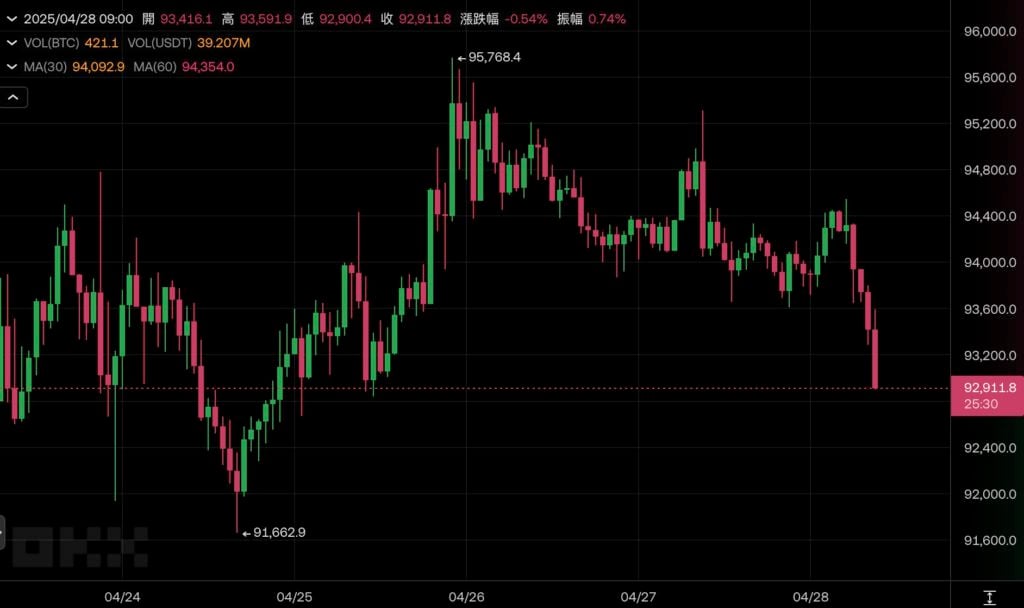Bitcoin continued to fluctuate narrowly between $94,000 and $95,000 over the weekend, until a more significant decline occurred early this (28th) morning, falling below $93,000, with the price reported at $92,911 at the time of writing.
In the new week ahead, investors will face a series of key events and data that could bring significant volatility to financial markets. Of particular note are the highly anticipated tech giant earnings reports on Wall Street, the US employment report, and the subtly changing US-China trade relations.

Tech Giant Earnings Season: Leading or Dragging the Market?
This week is a critical period for US corporate earnings, with several influential Wall Street tech giants set to release their latest quarterly financial reports. Among them, the performance of Apple, Microsoft, Amazon, and Meta - considered the market leaders of the "Seven Giants" - is undoubtedly the focus of global investors.
Market analysts point out that from the beginning of 2025 to now, the overall stock prices of the "Seven Giants" have shown less momentum compared to the previous year, partly due to excessive previous gains and market disagreements about future growth potential. Therefore, the earnings performance of these tech giants this week is crucial for determining the short-term and medium-term direction of the tech stock sector and the overall US stock market.
Key Economic Data: Employment, Inflation, and Fed Policy Uncertainty
In addition to the dense corporate earnings reports, a series of important macroeconomic data this week will significantly impact market judgment and trends. The United States will release multiple labor market data, including the April unemployment rate and the ADP employment report, known as the "mini non-farm payrolls," as well as initial jobless claims from last week.
If the upcoming employment data shows a still-tight labor market (such as declining unemployment rates and continued wage growth), this could mean that inflationary pressures have not fully eased, potentially reinforcing the Federal Reserve's commitment to maintaining higher interest rates for a longer period or delaying market expectations of rate cuts. Conversely, if employment data is weaker than expected, indicating a slowdown in the labor market, this could provide the Federal Reserve with more room for rate cuts.
Regarding US-China trade relations, although the overall friction background remains, some signals of easing emerged last week. Reports suggest that China is considering exempting some US pharmaceutical products from the previously imposed 125% retaliatory tariffs and may suspend tariffs on at least 8 US semiconductor products.
On the US side, Treasury Secretary Becent released some relatively mild statements earlier, which may help ease global supply chain tensions and potentially have a positive impact on market risk sentiment. Nevertheless, the volatility of trade policies still requires investors to remain cautious.






